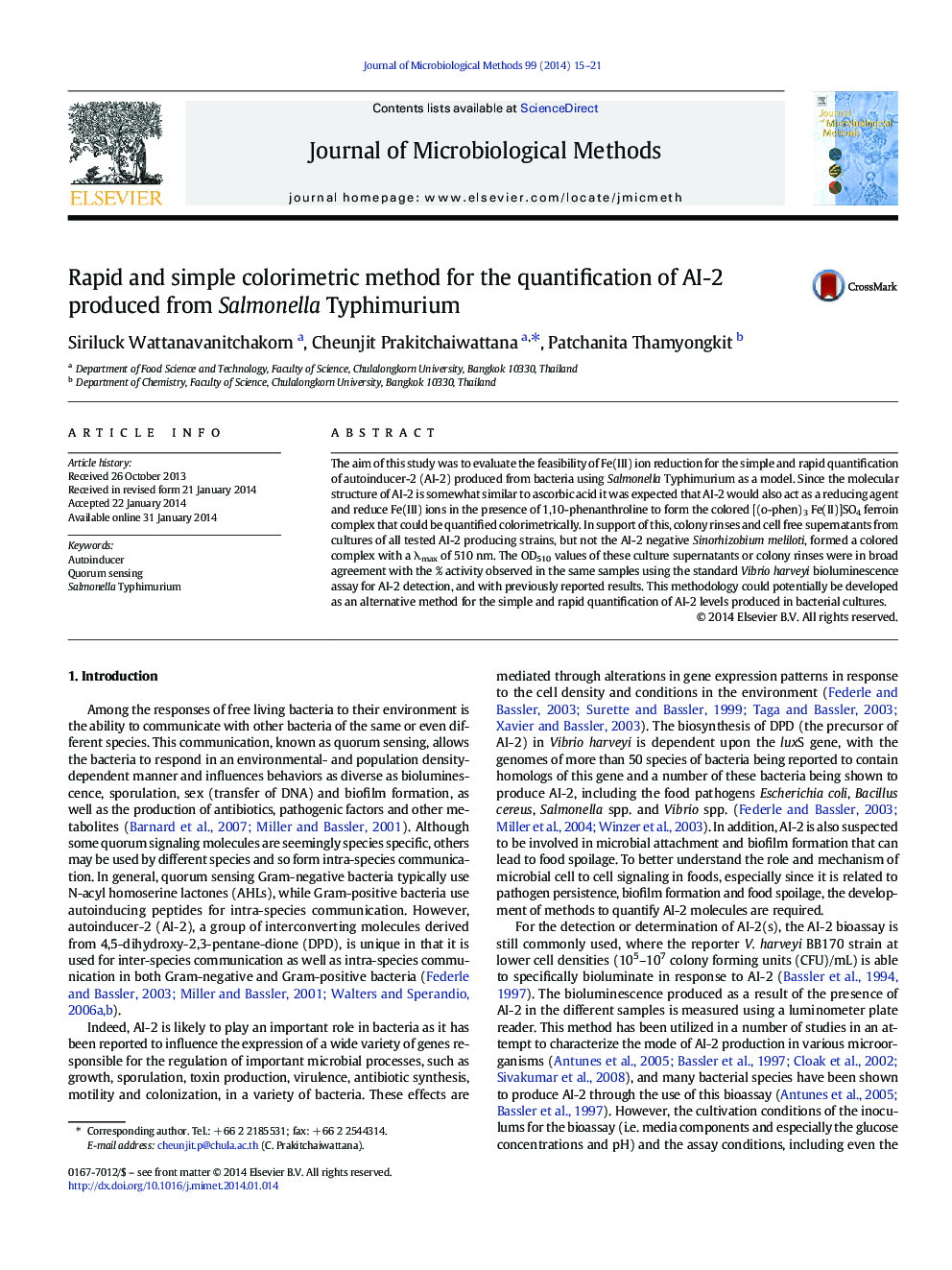| Article ID | Journal | Published Year | Pages | File Type |
|---|---|---|---|---|
| 2090004 | Journal of Microbiological Methods | 2014 | 7 Pages |
•AI-2 contains a diol group like ascorbic acid reducing Fe(III) to colored agent.•Metal ion reduction for AI-2 detection in bacterial culture was evaluated.•Complexes (OD510) were found in cultures of AI-2, not in non-AI-2 producing strains.•Test results also agreed with the standard bioluminescence assay.•This colorimetric method potentially be developed as simple and rapid AI-2 detection.
The aim of this study was to evaluate the feasibility of Fe(III) ion reduction for the simple and rapid quantification of autoinducer-2 (AI-2) produced from bacteria using Salmonella Typhimurium as a model. Since the molecular structure of AI-2 is somewhat similar to ascorbic acid it was expected that AI-2 would also act as a reducing agent and reduce Fe(III) ions in the presence of 1,10-phenanthroline to form the colored [(o-phen)3 Fe(II)]SO4 ferroin complex that could be quantified colorimetrically. In support of this, colony rinses and cell free supernatants from cultures of all tested AI-2 producing strains, but not the AI-2 negative Sinorhizobium meliloti, formed a colored complex with a λmax of 510 nm. The OD510 values of these culture supernatants or colony rinses were in broad agreement with the % activity observed in the same samples using the standard Vibrio harveyi bioluminescence assay for AI-2 detection, and with previously reported results. This methodology could potentially be developed as an alternative method for the simple and rapid quantification of AI-2 levels produced in bacterial cultures.
